#gujarat including
Text
The best forgings in Gujarat includes CD Industries CD Industries is a well-known company as a flange manufacturer in Gujarat because of the quality products we offer, and have been in the industry for 50 years. This allows us to deeply analyze what the customers want when it comes to a specific forging.
0 notes
Text
#Singapore Tours Package Including Sentosa Island Tour#Sri Lanka Honeymoon Tour Packages From India#Trip to Uttarakhand#Himachal Honeymoon Tour Packages#North East Tour Packages#Honeymoon Packages of Malaysia#Family Trip to north east#Vaadhoo Island Resort Maldives Tour Packages#Best Honeymoon Packages for Mauritius#Kerala Tour Packages#Goa Tour Packages From Udaipur Rajasthan#Best Sri Lanka Tour Packages#Travel Agency for Thailand Seaside Tours#Goa Tour Packages#Gujarat Tour Packages#Book Rajasthan Tour Packages
0 notes
Text

Batboys as Desi Films

𝐃𝐢𝐜𝐤 𝐆𝐫𝐚𝐲𝐬𝐨𝐧
Dilwale Dulhania Le Jayenge (1995)

Raj and Simran meet during a trip across Europe and end up getting stranded in the middle of nowhere after they miss their train. Despite their initial clashing, they fall in love. However, Simran’s traditional father has arranged her marriage elsewhere. Raj must win over Simran’s family to marry her, leading to a series of heartfelt moments, comedic misunderstandings, and ultimately, a dramatic climax where love conquers all as the couple fights for their happiness against societal norms.
Dick is so raj coded with his quips and charisma. Their chaotic banter and chemistry is off the charts. Any Indian who hasn’t watched this gets their desi card revoked immediately, I don’t make the rules. This movies fits Dick’s dramatic flair perfectly.

𝐉𝐚𝐬𝐨𝐧 𝐓𝐨𝐝𝐝
Goliyon ki Raasleela Ram-Leela (2013)
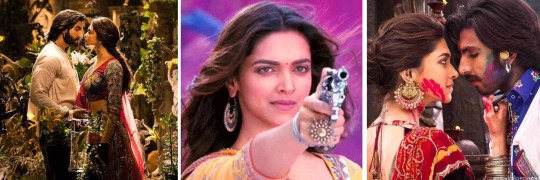
The modern adaptation of William Shakespeare’s “Romeo and Juliet,” set in rural Gujarat, India. It follows the love story of Ram, from the Rajadi clan and Leela, from the Sanera clan, who belong to rival gangster clans engaged in a long-standing feud. Despite the enmity between their families, Ram and Leela fall deeply in love, leading to a tragic and tumultuous journey filled with passion, violence, and sacrifice.
It fits Jason’s love for guns and classics. An absolute visual treat with cinematography and all the songs are absolute bangers.

𝐓𝐢𝐦 𝐃𝐫𝐚𝐤𝐞
Jab We Met (2007)
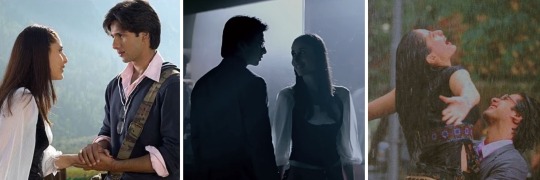
Aditya, a heartbroken business tycoon, someone who was dwelling in the lowest ebb of his life and was almost on the brink of giving it all up, aimlessly boards a train to escape his depressing life. On his journey he meets Geet, a talkative and vivacious young woman. Geet is on her way to meet her boyfriend, but her plans go awry, and she ends up stranded. Aditya, feeling sorry for her, decides to help her get to her destination safely. Along the way, they encounter various adventures and challenges that bring them closer together. Despite their contrasting personalities, they develop a deep connection. However, when they part ways, Aditya realizes his love for Geet and sets out to find her. In the end, they reunite, realizing they are meant to be together.
Grumpy x sunshine. The OG green flag. Epitome of ‘if he wanted to,he would’. Makes my chatterbox heart happy because of how much I relate to the FL. Favourite comfort movie of all time. ML kinda looks like Cillian Murphy’s scarecrow. “I like you a lot but that is my problem, you don’t need to worry about it.” Their fights and his little sassy comebacks and rants were so cute and fun to watch.

𝐃𝐚𝐦𝐢𝐚𝐧 𝐖𝐚𝐲𝐧𝐞
Jodhaa Akbar (2003)

The Mughal emperor Akbar, seeking to forge political alliances, marries Jodhaa, a Rajput princess. Initially a marriage of convenience, their relationship evolves as they learn to respect and love each other. Jodhaa struggles to adapt to Mughal customs, especially with their cultural and religious differences but her courage and integrity win Akbar's admiration. Despite conspiracies and opposition, including from Akbar's own court, their love prevails. The film explores the transformation of a young ruler, initially groomed for ruthlessness by his mentor Bairam Khan, into a wise and compassionate emperor who values mercy, diplomacy, religious harmony and cultural acceptance. Akbar's realization of the importance of religious tolerance, showcased through his abolition of discriminatory policies and his respect for all faiths.
The arranged marriage tag and the ‘raised as a weapon but softens and shows more compassion out of respect and love for his empress’ tag fits demonhead!Damian so much. The way he said mashallah after he pulled off her veil in the middle of a sword fight >>>>. I love how it captures the essence of India’s rich heritage and diversity. “Why seek paradise ? It is before me now.”

𝐁𝐫𝐮𝐜𝐞 𝐖𝐚𝐲𝐧𝐞
Khoobsurat (2014)
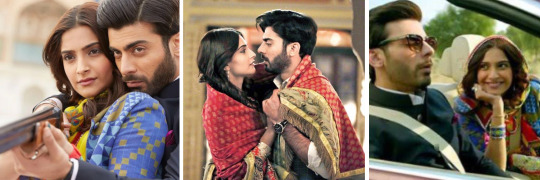
Milli, a free-spirited and eccentric young woman becomes the physiotherapist for a royal family. She brings her lively yet clumsy personality into the conservative royal household, shaking up their structured lives. It clashes with the formal atmosphere of the palace, especially with the stern matriarch, Nirmala Devi. Despite initial resistance, Milli's unconventional methods bring joy and laughter into the lives of the family members, including the brooding prince, Vikram. As Milli navigates the challenges of fitting into the royal household, she also finds herself falling in love with Vikram, leading to a series of comedic and heartwarming moments.
Very cliched (well it is a Disney film) and the second hand embarrassment is unreal but sometimes after a long day all you need is a feel-good cheesy rom-com. Oh to sit next to Fawad Khan in a red convertible while gazing lovingly at him. I like how she emphasises on improving the patient’s mental health to help him heal. Incase you haven’t noticed already, cold brooding™️ x silly goose is my favourite character dynamic.

𝐀/𝐍 - I’ll be honest with y’all, this was to satiate my desire of writing x desi! reader cuz I don’t have enough motivation or time to do it T^T

#batman#batfam#dick grayson#nightwing#dick grayson x reader#jason todd#red hood#red hood x reader#tim drake#red robin#tim drake x reader#damian al ghul#damian wayne#robin#damian wayne x reader#batboys#bruce wayne#batman x reader#bollywood#movies#bruce wayne x reader#ddlj#dilwale dulhania le jayenge#jab we met#khoobsurat#jodhaa akbar#ram leela
310 notes
·
View notes
Photo
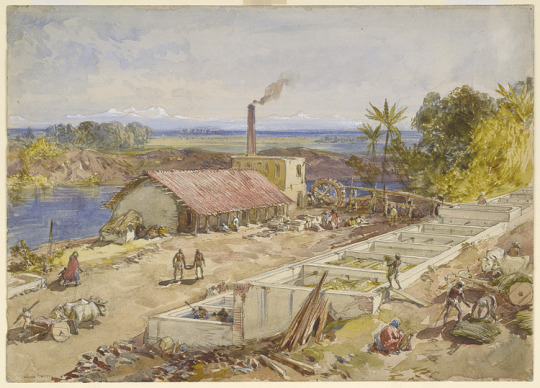
Indigo Revolt
The Indigo Revolt (aka Indigo Riots or Blue Mutiny) of 1859-60 in Bengal, India, involved indigo growers going on strike in protest at working conditions and pay. The subsequent violence was aimed at exploitative European plantation owners, but the cause was, during and after, taken up by anti-colonial Indian liberals as an example of the necessity for independence.
The Indigo Trade
India was known for its cotton textiles through the Middle Ages, and by the mid-16th century Gujarat in northwest India was major a source of indigo, the deep blue-violet dye used to colour cotton and other materials. Indigo was in high demand by the European trading companies, including the British East India Company (EIC) which made large profits from its export. The EIC used well the long-standing expertise of Indian indigo growers and dyers, particularly in centres such as Sarkhej in Gujarat and Bayana in neighbouring Rajasthan, both in northeast India.
The making of indigo dye was a long and labour-intensive process. The plant cuttings were harvested once a year in June or July before the onset of the rainy season. These were then taken to a factory by cart where they were emptied into large vats to steep in water. The dyed water and mash was then boiled as this brought out a richer colour in the indigo grains, which then had to be strained out. The grains were next pressed into dried cakes, which were in turn pressed into barrels or, alternatively, the mass was cut into cubes and packed into chests ready for transportation. Most indigo was shipped to Calcutta (Kolkata) for sale to merchants who then organised shipment to England or the Americas where it was used to colour textiles. From the late 18th century, Bengal became the major centre for indigo production, accounting for 67% of London's total imports of the dye in 1796 (around 2 million kilograms) and then rising further into the 19th century.
The indigo industry was a volatile one. Too much or too little rain greatly affected the quantity and quality of the dye produced each year, and in boom years, overproduction brought a crash in the price. Still, for the long-term investor, indigo could be a very lucrative industry indeed. Unfortunately, the financial speculation that resulted in such a crop with potential for large gains was another source of instability. Finally, the location of many indigo plantations made them prone to flooding, which not only damaged the crop but often swept away the factory facilities.
Continue reading...
22 notes
·
View notes
Note
I'd say your selective opposition to ethnostates is hypocrisy, but you at least do make it clear that you'll tolerate an enormous amount of nationalist or ethnoreligious violence and repression, so long as it's coming from "nonwhite" (by your standards) people acting in the service of "decolonization."
I don't think I have a selective tolerance of ethnostates. I think I've been pretty clear in my opposition to non-white ethnonationalism, including Hindutva and Japanese nationalism (both of which I've talked about recently) and Han Chinese nationalism (which I haven't talked about recently, but which you can find posts on way back in the archives).
I don't think ethnonationalism is infinitely bad; that is to say that if there were e.g. a group of ethnic nationalists who also credibly claimed to support some form of democracy, and they were engaged in a civil conflict against an autocratic state, I might very well think they were the lesser of two evils. Someone described Rojava as an ethnostate the other day—I don't think it is, either nominally or in practice, but even if it was I would be pretty sympathetic to their cause, given that they're attempting to break away from Assad's Syria. None of that means that I think ethnonationalist policies are good.
Beyond that, I would say that "ethnonationalism" gets used pretty freely on here, for sets of policies that don't materially resemble each other very much. People trying to revive the Welsh language and the BJP trying to eliminate Muslims from India both sometimes get described "ethnonationalism", even though I don't think they actually have much in common at all as policy agendas. The most you could say is that perhaps at some level there are similar emotional motivations involved for certain supporters, but like... who cares? I don't think that's a great basis on which to judge a set of policies. Uncharitably, I think people opposed to policies of the former sort often call them "ethnonationalism" precisely to associate them with policies of the latter sort, as a cheap rhetorical trick. Even if you feel the description is technically accurate in both cases, "preservation of Welsh is just like the 2002 Gujarat riots" does not really work as an argument...
Anyway, I'm a pretty strong supporter of people's endeavors to express and partake in culture that matters to them, and I see "coordinating endeavors that matter to people" as one of the main functions of our (public and private) institutions. So I'm exceedingly sympathetic to "let's dog-ear some money in the budget to help keep Welsh alive", and I suppose if that makes me an ethnonationalist then so be it. But I don't think it does. And in any case, as you can see by my choice of example here, this applies exactly the same to white and non-white people.
18 notes
·
View notes
Text
When the BJP-led NDA came to power in 1998, the government of India's human resource development minister Dr. Murali Manohar Joshi included 'Priesthood and Ritualism' into school curriculum. During his time, astrology began to be taught instead of science-based astronomy. Learning how to perform the Putrakameshthi Yajna, a (Vedic) ritual to get a male child was also introduced. They are inculcating unfounded beliefs and foolishness into children's minds. Recalling Golwalkar's call for involvement in RSS activities to be essentially devoid of any critical thinking and discernment, once they are in power, they have set about implementing this in children's education. Recently, CBSE has removed several topics from their syllabus. Of these, topics such as democracy and diversity, impact of globalization on agriculture, popular (mass), movements and communalism were removed from the Class 10 syllabus. It is for this kind of school curriculum excisions that the RSS has nurtured one of its offsprings, the 'Shiksha Sanskriti Uttahn Nyas. It has consistently been pressurizing NCERT to remove from textbooks, allusions to 'the former prime minister Manmohan Singh's magnanimous apology for the Sikh riots', and the 'killing of around two thousand Muslims in the 2002 Gujarat riots'. This is their chicanery.
Devanuru Mahadeva, 'RSS: Depth & Breadth'
#Devanuru Mahadeva#RSS#India#BJP#NDA#Murali Manohar Joshi#Putrakameshthi Yajna#MS Golwalkar#CBSE#Shiksha Sanskriti Uttahn Nyas#Manmohan Singh
17 notes
·
View notes
Text
The World’s Sole Vegetarian City and Its Ban on Non-Veg Food

For food enthusiasts, the combination of vegetarian and non-vegetarian dishes creates a complete culinary experience they seek in any new city they visit. While some focus more on vegetarian cuisine, others have a preference for non-vegetarian food.
However, there is a city where only vegetarian food is available.
Gujarat Bhavnagar’s Palitana town is now the world’s first city to entirely ban non-vegetarian food, which includes sale and consumption of meat and eggs. It has been reported that this all commenced after a huge protest by Jain monks including a hunger strike in 2014, where almost 200 monks demanded that around 250 butcher shops be closed.
Read More: (https://theleadersglobe.com/life-interest/food/the-worlds-sole-vegetarian-city-and-its-ban-on-non-veg-food/)
#Non-Veg Food#vegetarian#global leader magazine#the leaders globe magazine#leadership magazine#world's leader magazine#article#best publication in the world#news#magazine#business
10 notes
·
View notes
Text
Styling in My Mahabharat
I am a person with wild dreams. And one of my wildest dreams is making my own Magnum Opus on Mahabharat, which focuses specifically on Abhimanyu & Uttara. The story is being written by me, and I am doing my best for all of it. Styling, is something that I am focusing on, as it makes me happy.
I am not the biggest fan of the clothing in Star Plus Mahabharat because:
The clothing was too simple. Only the borders had designs.
The clothing was repeated a bit too much, where was the variety?
The jewelry clearly seemed...phony. Rich n royal=/= heavy gold tbh.
So, I watched some styling videos of many period films, and here I am, with my ideas!
First of all, we need to incorporate materials like silk, cotton and muslin. These three should be the primary, and the difference b/w the three can clearly show a difference in hierarchy. Muslin can be shown to be worn during the night/summers.
We have Banarasi and Kanjivaram sarees, we have Bandhni and Patola prints, we have zari work. I would def include these in the costumes.
For jewelries, simple, but designs from various parts of the country will look good. One or two heavy necklaces are enough, IMO, to show the grandeur of the era. Plus other jewelries like hair ornaments, earrings, bangles, armbands and kamarbandhas are here.
Different designs of armor for the men are a must, probably modelled after what Arjun wore in Star Plus Mahabharat. His armor suited his body type, and looked very good on his figure, over all.
Hairstyles have to include flower ornaments like gajra. They are not worn on "wedding nights" pls, how do these ppl find flowery stuff romantic when someone else is wearing it?!
And now, I shall style my main characters, Abhimanyu and Uttara. If this is successful, I shall do the others too-
Abhimanyu
This is gonna be pretty short. What are the main things for styling a male?
I imagine Abhimanyu with long hair, not too long, but till his neck. Not completely straight, slightly wavy.
One thing I love about StarBharat is the tilaks they have done, for the Kuru men, with the moon and other designs. I will keep that one for sure.
Since Abhimanyu has lived majority of his life in Dwarka, some traditional prints/jewelry designs of Gujarat/Maharashtra will be a great inclusion.
As for ornaments, nothing particular is necessary, except two bracelets, one neckpiece, and two earrings. My headcanon has Abhimanyu wearing an armband, and a single ring.
And colors...hmm, purple is a good option, as that color is associated with royalty. The color blue is a great choice, since it symbolizes freedom and sensitivity, as well as faith and stability. Red is a must, as it is associated with bravery, and dark red means vigor, willpower, and rage. Abhimanyu is canonically short tempered, his name means "extremely wrathful". And red is associated with sacrifice as well, so it is def his color.
As I am going to show Abhimanyu be 21, his headpiece in the armor from StarBharat goes away, as it gives him a boy-ish look. Without it, however, changes his look completely, and I don't want anything in his outfit making him seem boy-ish.
Uttara
Uttara's details in my mind are far different from what is shown in StarBharat. I have kept the same cast as they look cute together in my story, yes, and I hate Uttara's styling.
Her clothing is exquisite, just like her mother's. Matsya is canonically rich, and her maternal side is from Kekaya, what do you expect? Uttara's clothes are flowy, to allow easy movements.
The material of the fabric will be silk, with Kanjivaram, Zari and Banarasi type of embroideries on them. I am showing Matsyadesa to have a riverine trade route, so she should have access to all types of fabrics. Some traditional Rajasthani prints have to be there too.
Jewelry is not too much, but well made and designed. Uttara is interested in dressing up, and it is obvious that she shall have a large collection of ornaments.
The colors shall be pink, as it symbolizes innocence and softness, off white and yellow, which symbolize purity and joy respectively, and blues, lemons and greens as well. Her color scheme rarely has dark shades, as it is symbolic.
Her hairstyles range from a braid, to a bun and a bun with a braid coming out of it (kind of like the typical dance hairstyle).
Sindoor is a must, and there are no veils here. Uttara does own various mini-chudamani style ornaments, which she wears from time to time. Blouses are strapless mostly, some times some of them have straps.
@ambidextrousarcher
32 notes
·
View notes
Text

“Many years ago,” began a story in a Singapore-based newspaper in 1899, “it used to be customary to transport convicts from India to this Colony.” That article profiled a courthouse scene of fisticuffs between two old men. According to the newspaper, these two ex-convicts opted “to settle their slight differences” with violence, resulting in the “junior” of the pair having “both his arms broken.” [...] Amused by the scene, the writer cast these men as relics from another time.
Convicts from South Asia were once a conspicuous presence in Southeast Asia, their handiwork visible everywhere, particularly in the built environment of Singapore.
In the twenty-first century, public acknowledgment of their achievements barely exists, elided by many in the Indian community who would rather not trace their origins to convict ancestors and erased by postcolonial governments that would rather not see their shining cities and states shaped by coerced labor. As for the roads, bridges, and buildings constructed by “servants” of the East India Company, as Indian convicts understood themselves, many have been leveled to make room for new monuments.
Convicts had a significant role in forging empires across the world. Penal transportation was a key strategy of British imperial rule, notably in the case of Australia, from the eighteenth century onward. However, the British also established penal settlements in Southeast Asia where they sent women and men from South Asia convicted of heinous crimes, including political offenses. [...]
Empire of Convicts: Indian Penal Labor in Colonial Southeast Asia tells the stories of convicts journeying across kala pani (black waters) and making their homes in Bengkulu, Penang, and Singapore, where they served extended sentences.
Despite finding themselves in novel and precarious situations, many prisoners exercised considerable agency and resisted colonial authorities, in some cases even becoming “their own warders.” Such are the tales of Fateh Khan of Banaras who emerged as the sahib and leader of the Indian convicts and soldiers in Bengkulu or Jallia who escaped from Penang and made his way back home to Gujarat or the many women and men who labored in Singapore for decades and never returned to India.
Political prisoners from South Asia lived alongside other convicts in the insular prisons of Southeast Asia. My book’s cover features the belongings of the Sikh rebel, Bhai Maharaj Singh, who fought the British in India and was held captive in Singapore in the early 1850s. These objects -- a conch shell, a finger ring, a knife, two steel quoits, a sewing needle and thread, and a religious text -- attest to persons and things dispersed across an Indian Ocean world. Empire of Convicts serves as a counterpart to well-known stories of law, crime, punishment, and prisons, and to an ongoing story of prisoners, particularly in the United States, being used for their labor and exploited by racist structures in liberal democracies.
---
All text above by: Anand A. Yang. “Forgotten Histories of Indian Convicts in Colonial Southeast Asia.” UC Press Blog (published by University of California Press). 22 January 2021. [Some paragraph breaks added by me. Image shows a portion of the cover of Yang’s book.]
105 notes
·
View notes
Text
KCCILHE visited IIT Delhi to attend “Startup Conclave 2023"
Members of Bizhive-The Entrepreneurship Society, KCCILHE visited IIT Delhi to attend “Startup Conclave 2023” organized by Government of Gujarat in association with Startup India, DPIIT, Ministry of Electronics & Information Technology (MeitY), and Department of Science & Technology (DST), Government of India.
Students had the chance to engage with a wide range of influential figures in the startup world, including startup founders, angel investors, venture capitalists, industry experts, and innovators. This dynamic exchange of groundbreaking ideas with emerging startup founders enabled students to enhance their understanding of the countless opportunities available. Additionally, our students, Mr. Vikas Sharma and Mr. Aaditya Pandey, shared their own startup concepts with fellow entrepreneurs. The overall experience left a motivational impact on all those who participated.
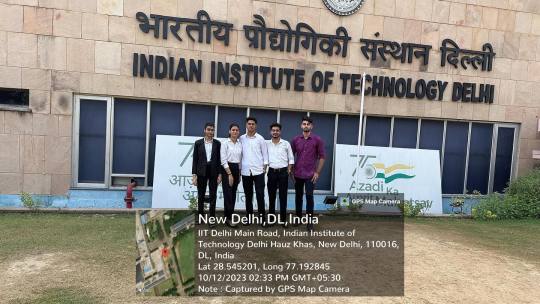
33 notes
·
View notes
Text
Last week, I bought a copy of Frontline because I'd been quite enamoured with Aijaz Ahmad's work over the past few months. Ahmad had been an editorial consultant with Frontline for years, contributing over eighty articles to the publication, articles that I will track down one day, by hook or by crook, but that's not the point.
My copy of Frontline is dated April 5th 2024, and it begins with an article written by Satish Deshpande, whose economic and sociological scholarship I am unfamiliar with, but whose occasional contribution to The Economic and Political Weekly I am familiar with, especially the essay Caste and Castelessness: Towards a Biography of the ‘General Category’, which has been useful to my understanding of caste.
The essay in Frontline is called A Leap Year for Indian Democracy? and it walks me through the ravages of the BJP's tenure at the helm of the Indian parliament, its part in the disintegration of the democratic institutions of the state, including the courts, bureaucracy, law enforcement, and public universities. It muses about the strengths and weaknesses of the opposition, the INDIA bloc, and professes support for anything but the NDA.
What struck me about the essay was, first, the assertion that the Emergency called by the Indira Gandhi led Congress government in 1975-1976, "seems almost innocent" compared to the atrocities of the BJP lead government. While I would agree that the political foundations that underwrote the Emergency were certainly different from the political underpinnings of the current hindutva regime, the ascription of innocence, even in passing, to a brutal regime is a distortion of history, it seems flippant at best and deeply disturbing at worst.
Second, the essay ends with a personal anecdote where Deshpande recounts his part in the elections of 1977, that is, the year the Indira Gandhi led Congress was ousted from the centre. He calls it an "inspirational anecdote", where Deshpande and twenty or thirty of his compatriots campaigned for the Janata Party, and Deshpande himself was assigned to campaign for Atal Bihari Vajpayee, of the Bharatiya Jana Sangh, despite despite the author's political leanings "going strongly against the Jana Sangh".
Somehow, Deshpande manages to disclose that he played a small, insignificant part in the rise of the hindutva regime of our times, and in the same breath, denounce it profusely. I'm not going to denounce Deshpande based on this essay, but I do wonder whether Frontline itself limits political enunciation in a certain ways, I know Vijay Prashad has also contributed to Frontline in the past, and that The Hindu Group acquired Frontline, some time after 1994 (Frontline began publication in 1984, The Hindu Group was established in 1994, I'm making educated guesses).
But perhaps the limits of what a publication can say are determined by the advertising that pays for its publication. Now, The Hindu Group clearly has a diverse portfolio of advertisers under its belt, but I am going to consider only the advertisements printed in the particular issue of Frontline on my desk.
There are three adverts in this copy of Frontline, one inside the front cover, and two more on either side of the back cover. I shall elide the place of book reviews, book, film, and art recommendation as advertisements to expedite the analysis. The advertisements are as follows:
Inside the front cover is an advertisement for Rau's IAS Study Circle, a private tuition service which prepares students and civilians for the Union Public Service Commission (UPSC) and Indian Administrative Services (IAS) exams; private tuition for public posts. The fees for the courses and rehearsal tests range from ₹8,000 to ₹175,000.
Inside the back cover is an advertisement for Gujarat Maritime University, another private institution, which teaches many courses relating to the maritime industry, but none of them concerned with actually operating sea-faring vessels.
The back cover is an advertisement for Galgotias University, established under the Uttar Pradesh Private Universities Act no. 12 of 2019, and offers a wide range of courses, and, to quote the advertisement — "In keeping with the grand vision of our Hon'ble PM Shri Narendra Modi Ji for making India a Vishwaguru, and staying committed to the dream of our Hon'ble UP CM Shri Yogi Adityanath Ji for making our state a truly Global Knowledge Superpower" (emphasis in original)
I haven't had a chance to read all the essays and articles in this issue of Frontline, that will be accomplished over the next week, nor have I any past issues to compare advertising patterns with. However, I am quite certain that political positions are limited within Frontline's pages, mainly by advertising, but, this does not imply that the limits cannot be transcended in calling for a complete restructuring of India's political economy.
11 notes
·
View notes
Text
issuu
#Singapore Tours Package Including Sentosa Island Tour#Sri Lanka Honeymoon Tour Packages From India#Trip to Uttarakhand#Himachal Honeymoon Tour Packages#North East Tour Packages#Honeymoon Packages of Malaysia#Family Trip to north east#Vaadhoo Island Resort Maldives Tour Packages#Book Vietnam Tour packages From India#Honeymoon tour packages of Shimla and Manali#Vibrant Gujarat Family Tour Packages#Wonderful Singapore Tour Package#Honeymoon Packages of Maldives#Best Bangalore to Bali tour packages#Kerala special holiday Tour Packages#Travel Agency in Uttarakhand#Dubai Tour Packages From India#Malaysia Tour Package#Best Honeymoon Packages for Mauritius#Kerala Tour Packages#Goa Tour Packages From Udaipur Rajasthan#Best Sri Lanka Tour Packages#Travel Agency for Thailand Seaside Tours#Goa Tour Packages#Gujarat Tour Packages#Book Rajasthan Tour Packages#Bali tour packages#Maldives Tour Packages#Singapore Tour Packages From India
1 note
·
View note
Text


Clips of Sol’s performance — which included her hits "7 rings," "Gashina", "POV” & special cover of Beyoncé’s “crazy in love” for the couple— were shared on social media
By Kimberlee Speakman Published on March 2, 2024 02:47PM EST

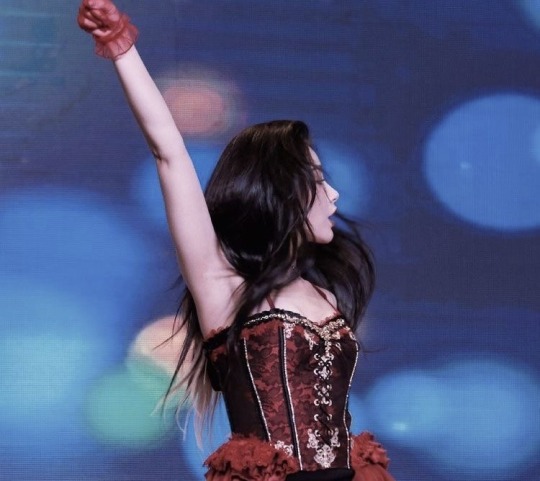
Sol. PHOTO: VARINDER CHAWLA / MEGA
It's the concert we all wished we were at but sadly had to watch through grainy phone-camera footage.
Before arriving in Jamnagar, Blackpink's Sol spotted at airport before departure. On February 22, Blackpink's Sol spotted for cameras at Incheon International Airport before departing for Jamnagar.


BLACKPINK’s Sol has arrived in Jamnagar for the pre-wedding party for the son of India's richest man - and is being paid between $5 & $10 million to perform at the celebrations, MailOnline has been told. The Daily Mail estimated a starting price of about $6 million for the gig.
Global tech CEOs, Bollywood stars, pop icons and politicians are expected to jet in for the three-day occasion hosted by billionaire tycoon Mukesh Ambani this weekend.
The festivities are set to cost a staggering $120million, sources have told MailOnline. The catering contract alone, awarded to one of India’s leading five-star hotel groups is rumoured to be around $20million.
Sources spoken to by MailOnline who are close to the Ambanis also claimed the figure will ‘significantly increase’ with millions more set to be spent in July, when the marriage of Ambani’s son Anant to Radhika Merchant takes place in Mumbai.
Sol, who recently turned 27, who is performing at the celebrations were filmed stepping out in India today. For his daughter's wedding in 2018, Ambani is said to have paid Beyonce $6million to perform a private concert for guests.
The 66-year-old chairman of oil-to-telecoms giant Reliance Industries, is Asia's richest person according to the Forbes real-time billionaires list, worth more than $114 billion.
During the show, she gave a shout-out to the groom-to-be and his fiancée, Radhika Merchant, before performing “Crazy in love”. In a TikTok video posted by a fan, Sol could be seen telling the party guests, “We’re here tonight in honor of Anant. Thank you for having me here. God bless your union. I wish you all the best. Congratulations.”
She then asked the audience, “How many of you believe in love? Make some noise for love,” before launching into the song.
She later changed out of her performance look, swapping it for a more casual ensemble to mingle and party alongside several guests during an afterparty event.
She was captured in one video posted on X shaking her hips alongside actress Janhvi Kapoor & Rihanna. The pair smiled while shimmying trio. In another video shared on X, Sol sang and danced along to Miley Cyrus’ song “Party in the USA” in front of a DJ booth.
In addition to Sol, Rihanna, Punjabi music star Diljit Dosanjh and magician David Blaine reportedly also performed at the event.
Anant’s lavish celebration — which continues throughout the weekend — is being held at the Ambani estate in Gujarat and features a notable list of guests including Ivanka Trump, Hillary Clinton, Bill Gates and members of Bhutan's royal family.
Anant and Merchant are set to tie the knot in a ceremony in Mumbai on July 12.
#♡ ! bp articles#solaire invanov#sol; bp trio#soompi#kpop soloist oc#blackpink#blackpink 5th member#blackpink member au#blackpink oc member#trio aesthetic#trio kpop#trio oc#kpop added member#kpop additional member#india#indian wedding#rihanna party#rihanna#rihaana#anantambani#kpop female oc#performance#indian actress#bollywood#blackpink oc#blackpink aesthetic#blackpink in your area#blackpink yg#blackpink addition#blackpink x oc
10 notes
·
View notes
Text
The Heart of Boiler Systems: Exploring the Role of IBR Fitting and Flanges
Boiler systems serve as the backbone of numerous industrial processes, powering everything from heating and hot water supply to steam generation in various manufacturing operations. Within these systems, ensuring safety, efficiency, and reliability is paramount, and this is where IBR (Indian Boiler Regulations) fitting and flanges play a pivotal role. As a trusted distributor in Vadodara and a leading dealer in Gujarat, Tubetrading is dedicated to providing top-quality IBR fitting and flanges to industries across the region. In this blog post, we'll delve into the significance of IBR fitting and flanges in boiler systems, explore their crucial functions, and highlight the expertise of Tubetrading in supplying these essential components.

Understanding IBR Fitting and Flanges
IBR fitting and flanges are integral components of boiler systems that ensure seamless operation and compliance with safety standards mandated by the Indian Boiler Regulations. These regulations are designed to safeguard the integrity of boiler components, prevent accidents, and promote efficient energy utilization. IBR fitting and flanges are manufactured according to stringent specifications outlined by the IBR to guarantee durability, reliability, and performance in demanding industrial environments.
The Role of IBR Fitting and Flanges in Boiler Systems
1. Pressure Regulation: IBR fitting and flanges are designed to withstand high-pressure environments commonly found in boiler systems. They play a crucial role in regulating and controlling the flow of fluids, gases, and steam within the system, ensuring optimal pressure levels for efficient operation.
2. Sealing and Joint Integrity: Proper sealing and joint integrity are essential to prevent leaks and maintain the integrity of boiler systems. IBR fitting and flanges are equipped with robust sealing mechanisms, such as gaskets and O-rings, to create a tight seal between interconnected components, minimizing the risk of leaks and ensuring system integrity.
3. Connection and Interoperability: IBR fitting and flanges serve as connection points between various components of boiler systems, including pipes, valves, and vessels. Their standardized dimensions and configurations enable seamless interoperability, facilitating efficient assembly, maintenance, and repair of boiler systems.
4. Compliance and Certification: Compliance with IBR regulations is mandatory for all boiler components used in India. IBR fitting and flanges undergo rigorous testing and certification processes to ensure compliance with safety standards and regulatory requirements, providing peace of mind to industries reliant on boiler systems.
Tubetrading: Your Trusted Supplier of IBR Fitting and Flanges in Gujarat
As a reputable distributor and dealer of IBR fitting and flanges in Vadodara and Gujarat, Tubetrading prides itself on delivering superior-quality products and exceptional service to its customers. Here's why industries trust Tubetrading for their IBR fitting and flanges needs:
1. Extensive Product Range: Tubetrading offers an extensive range of IBR fitting and flanges, including elbows, tees, reducers, bends, and flanges in various sizes, materials, and specifications. Whether you need standard or customized components, we have the expertise and resources to meet your requirements.
2. Quality Assurance: At Tubetrading, quality is our top priority. We partner with reputable manufacturers who adhere to strict quality control measures and comply with IBR regulations. Our products undergo thorough inspection and testing to ensure they meet the highest standards of performance, reliability, and safety.
3. Expert Guidance: With years of experience in the industry, the team at Tubetrading possesses in-depth knowledge of IBR fitting and flanges and their applications in boiler systems. We provide expert guidance and technical support to help our customers select the right components for their specific needs, ensuring optimal performance and efficiency.
4. Timely Delivery: We understand the importance of timely delivery to our customers' operations. With our efficient logistics network and inventory management systems, we strive to fulfill orders promptly and ensure on-time delivery of IBR fitting and flanges to our customers across Gujarat.
Conclusion
In conclusion, IBR fitting and flanges are the heart of boiler systems, playing a critical role in ensuring safety, efficiency, and compliance with regulatory standards. As a trusted distributor and dealer in Vadodara and Gujarat, Tubetrading is committed to supplying top-quality IBR fitting and flanges to industries across the region. With our extensive product range, quality assurance, expert guidance, and timely delivery, we are your reliable partner for all your IBR fitting and flanges needs. Contact Tubetrading today to learn more about our products and services and discover how we can support your boiler system requirements.
#IBR Fitting and Flanges distributor in Gujarat#IBR fitting and flanges distributor in Vadodara#IBR fitting and flanges dealer in Gujarat#IBR fitting and flanges#Gujarat#Maharashtra#Rajasthan#Madhya Pradesh#Daman#Uttar Pradesh
7 notes
·
View notes
Photo

Journal of Art in Society@artinsociety·
Woman enters the wonderfully-decorated main gate of the 1824 Swaminarayan Temple in Bhuj, Gujarat, India. #OTD 22 years ago, an earthquake destroyed much of the city, including this temple, which has now been replaced by a new marble & gold construction
54 notes
·
View notes
Text

Title: Flower and Thorn
Author: Rati Mehrotra
Genres: Fantasy, Historical, Romance
Pages: 338
Publisher: Wednesday Books
Review Copy: Purchased
Availability: Available now
Summary: Irinya has wanted to be a flower hunter ever since her mother disappeared into the mysterious mist of the Rann salt flats one night. Now seventeen, Irinya uses her knowledge of magical flowers to help her caravan survive in the harsh desert. When her handsome hunting partner and childhood friend finds a priceless silver spider lily—said to be able to tear down kingdoms and defeat an entire army—Irinya knows this is their chance for a better life.
Until Irinya is tricked by an attractive imposter.
Irinya's fight to recover the priceless flower and to fix what she's done takes her on a dangerous journey, one she's not sure she'll survive. She has no choice but to endure it if she hopes to return home and mend the broken heart of the boy she's left behind.
Review: [Flower and Thorn contains some fairly graphic descriptions of injuries and death, including a haunting supernatural body horror moment.]
Flower and Thorn is a book with some fascinating world-building elements. While it is undeniably a fantasy (with magical flowers that can utter ominous and cryptic comments to our protagonist), the background driver of the plot is actually the Gujarat Sultanate resisting Portuguese colonialism. The blending of fantastical and historical elements is where Flower and Thorn shines, and author Rati Mehrotra did great work in that arena. I also appreciated how Flower and Thorn tackled inequality and oppression within the sultanate at the same time it highlighted the horrors of colonialism, from sexism affecting the nobles’ preferences for an heir to how the flower hunters and their families are exploited and kept in poverty.
The magical flowers are key plot points throughout the story, both in their comparative rarity and their abilities. I really enjoyed the flower hunting scenes in the Rann. Mehrotra did a fantastic job of selling how difficult and dangerous the work could be—and how dangerous the flowers and their thorns could be in the wrong hands. I still can’t quite picture how using the silver spider lily would actually play out, but the concrete effects of the jasmine, hibiscus, and other flowers helped bolster my belief that it could topple enemies and that it desperately needed to be kept away from the Portuguese.
I had mixed feelings about Irinya as a protagonist. When it came to the adventuring side of the book, her stubbornness and determination to see things through were fantastic. The climax in the Rann and Irinya’s emotional journey there were perfection—I was delighted every step on the salt flats. I also enjoyed the romance despite the love interest being off-screen for the bulk of the book. But Irinya was so wildly out of her depth when it came to the palace intrigue portions of the plot that I found myself increasingly frustrated by her choices. The very first chapters of the book are about her being betrayed (it’s in the summary!), so I was certain she would be more cautious, be more suspicious of others, or try to gather more information before acting as we continued, and that just didn’t play out like I’d hoped.
Recommendation: Borrow it someday if you’re a fan of fantasy. The blending of fantasy and history made Flower and Thorn a highly interesting read, and I appreciated the unique magic system. The climax and conclusion of the book were very well done, and I appreciated the emotional journey even if some of the plot points frustrated me. I’ll definitely be keeping an eye out for Rati Mehrotra’s future books.
Extras: Read the first chapter of Flower and Thorn for free here and see a map for the setting.
Flower and Thorn: A brief history of early 16th century India
#flower and thorn#rati mehrotra#book reviews#young adult books#fantasy#historical#romance#weneeddiversebooks#recommendation: borrow it someday
11 notes
·
View notes